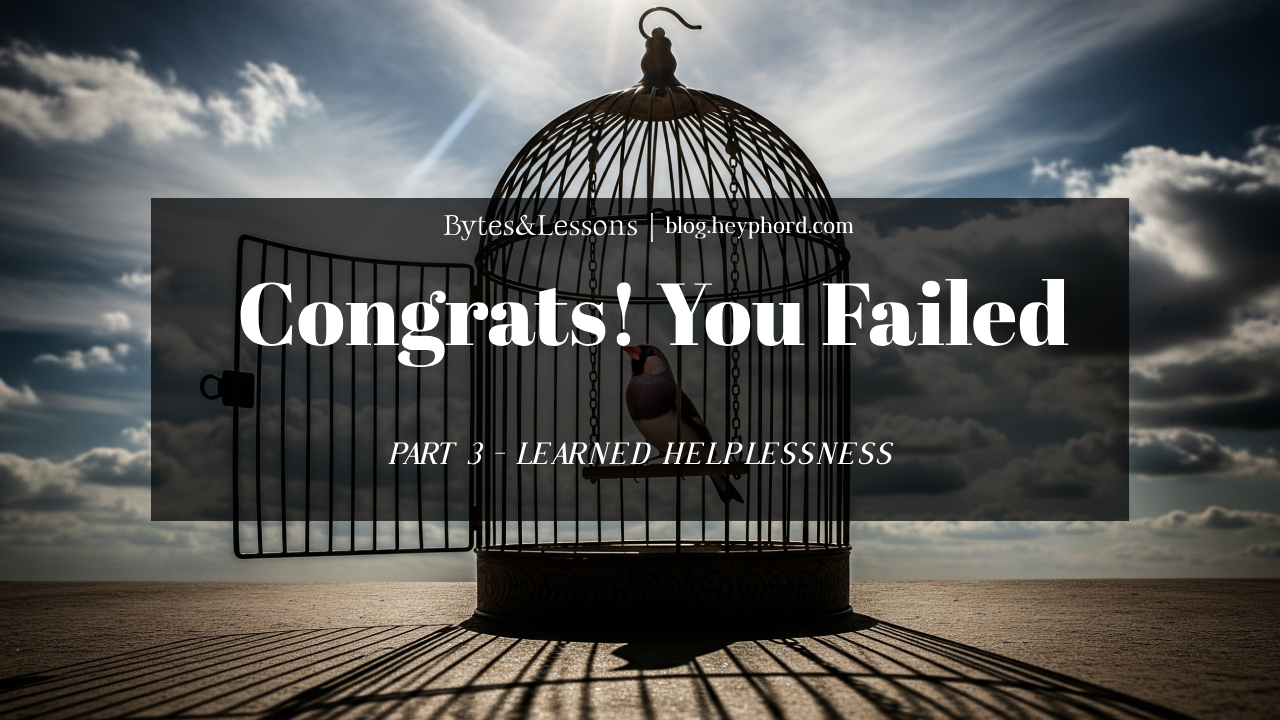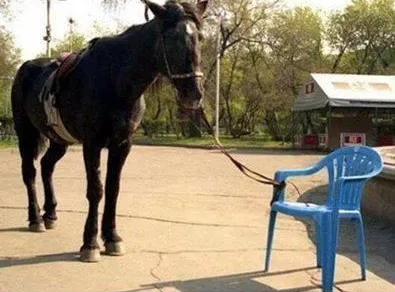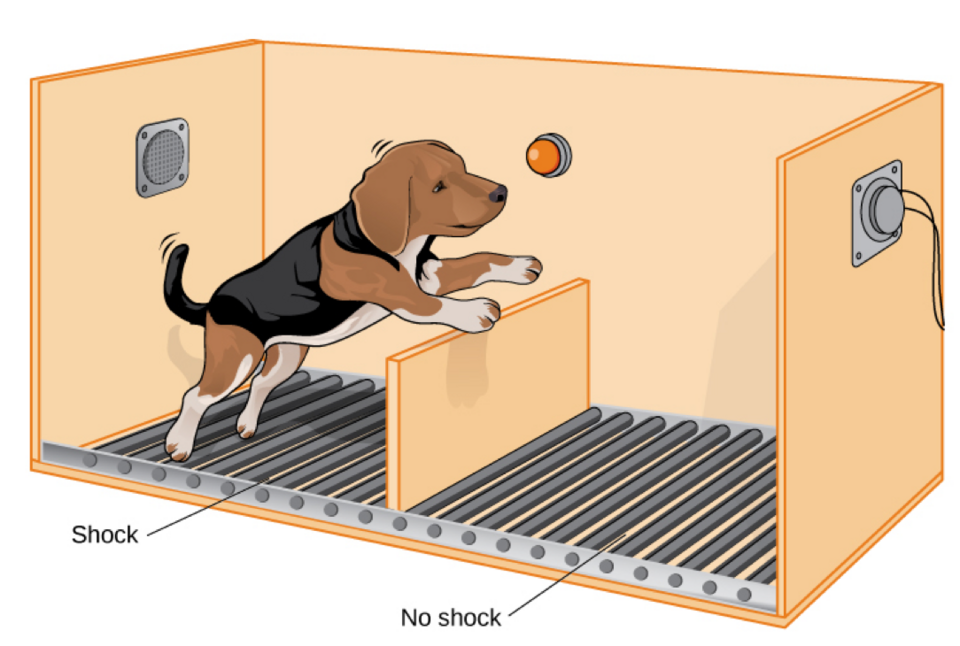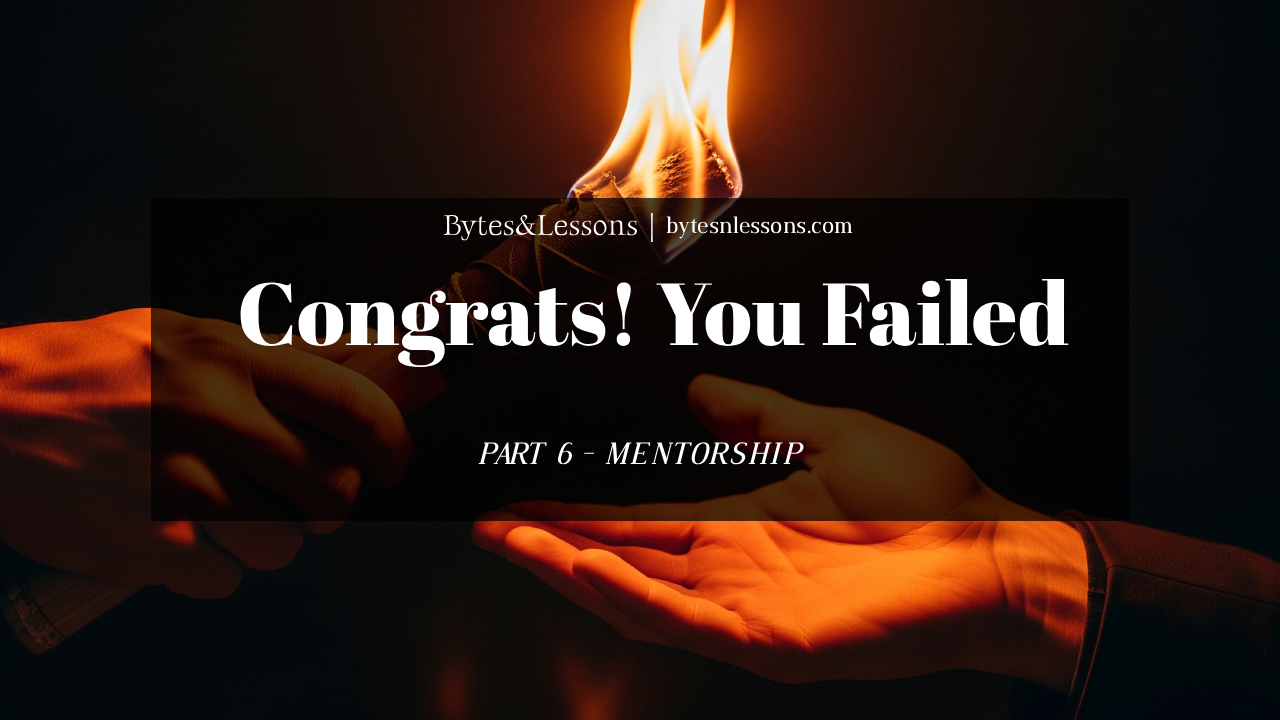Congrats! You Failed! : Part 3 - Learned helplessness

LEARNED HELPLESSNESS

Learned helplessness is a psychological condition where an individual (human or animal) learns to believe they have no control over a situation, even when they actually do. This belief often develops due to repeated exposure to negative or uncontrollable experiences in the past.
In the 1960s, Dr Martin Seligman conducted a famous experiment with two sets of dogs:
- Set A had the power to stop an electric shock by pressing a button.
- Set B was powerless to stop the shock regardless of what they did.
After the initial experiment, these 2 sets of dogs were later placed in a new box where they could all escape easily. When the shock was administered, Dogs in Set B never attempted to escape; they simply lay down helplessly.

The dogs in set B had learned that since they were helpless before, they would always be helpless - even when there was a crystal clear way to escape the shocks.
This is a terrifying cognitive bias that, without making a conscious effort to fight it, will rule over you your whole life. I have seen it play out in real life. The dangerous thing about this phenomenon is that those who have succumbed to “learned helplessness” can convince you to do the same.
How to break free
- Combat this by associating yourself with positive and resilient people.
- Expose yourself to new environments and cultures - see how others overcame challenges that seem insurmountable to you.
- Get rid of this defeatist mentality by cultivating an attitude of “never giving up without a fight” - remind yourself that every situation is not the same, and yesterday’s defeat doesn’t define today’s outcome.
In the next section, we discuss the role of shame and how it can quietly coerce you into giving up on your goals




